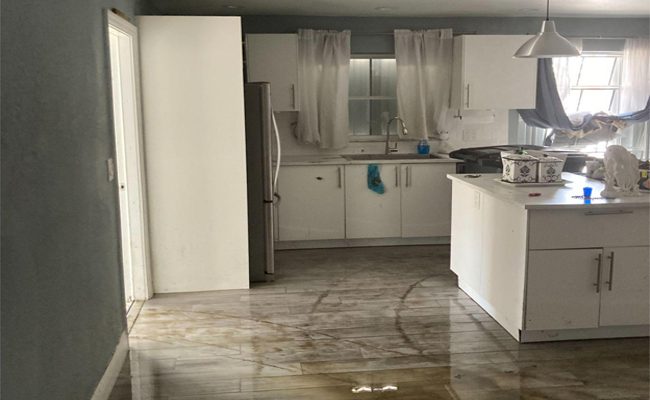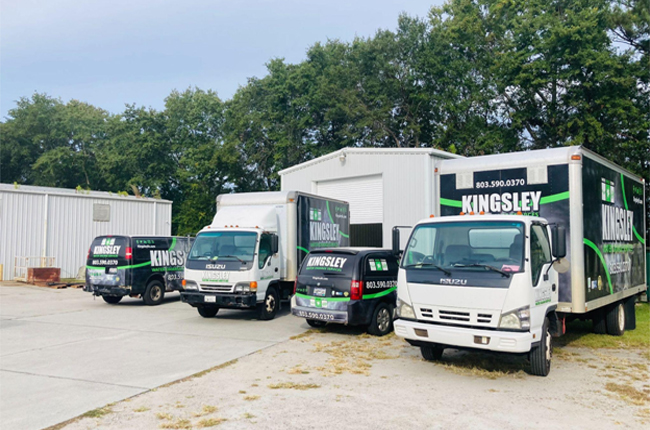
A devastating thing you can find yourself experiencing is water damage issues not being repaired after serious flooding or water damage occurrence in your home.
Irrespective of what you are dealing with, either leaking appliances, broken pipes, or even more severe problems such as flooded basements, sewer backups, or water damage resulting from a fire outbreak, all of them are capable of causing major problems.
To make things worse, there is barely time to waste to repair water damage issues, as mold can develop as soon as 24 hours after the occurrence. Even from a small quantity of water, mold can start developing.
Water damage can also cause various forms of structural problems and safety hazards which you may realize you didn’t notice until it is too late. Let us now examine how you can stop and repair water damage issues in your home.
5 Ways to Stop and Repair Water Damage in Your Home
Inspection and Assessment
A full examination of your property, including the inspection of a water damage occurrence, is needed before considering restoring your home. You need to have assessed the damage rate so that the required strategy is developed. Without a good plan, you will risk worsening the damage.
The inspection and assessment process includes identifying and stopping the water source. The water source has to be stopped before the drying process is expected to start.
Water Source
Generally, homes have three various types of water that flow through them at any time. The first category is often called clean water. It is usually supplied by rain and leaky pipes. It is also the easiest for homeowners to clean.
The next group can be referred to as gray water. It often comes from appliances like washing machines, toilets, and dishwashers. This water may also have contaminants, making it less easy to guarantee proper cleanup.
The third category of water that you may see during a water leakage is known as black water. Black water includes sewage and some other pollutants. The water is usually dirty and may come from a river that is close by.
Drying Out and Removal of Humidity
If you choose to start drying yourself, ensure you put on protective gear. Identify whatever can be salvaged and discard anything that is too damaged or is no more good for utilization.
When you have a good quantity of water standing, you can begin the removal with the use of plastic tubs or buckets. Afterward, you can make use of a mop to absorb excess water in areas that are difficult to get to. You can also hire a wet-dry vacuum from a grocery store or local hardware to complete the job when the majority of the water has dried out. However, allow the area to receive enough ventilation and dry completely.
Moreover, you can make use of a dehumidifier to help in speeding up the process. And if there is not a lot of standing water available, you can make use of the wet-dry vacuum right from the beginning.
As soon as every standing water has been eliminated, there will still be a need for you to attend to moist properties, especially if you reside in an area that has high humidity. But if you can have electricity on again, you can make use of central air conditioning to successfully eliminate humidity. Nevertheless, floor fans like dehumidifiers and air movers can also help dry moist areas in your home.
However, note that you need to avoid molds, mildew, and other problems that can result. Studies have shown that beginning the process of home drying within the first 24 hours, including home drying within 3-4 days, will eliminate the risk associated with mildew and mold.
Identify Mold and Prevent Mold as Much as You Can
Mold can start to develop from the first 24 hours of a flood. Unfortunately, the moment it starts growing, it will become hard to remove. Hence, the faster you remove properties from water and start to dry them, the lower the probability of them being taken away by mold.
Peradventure, the water damage problem becomes worse; you will then have to totally separate the affected area(s).
Once you realize that water damage exists in your home, it is essential that you take those measures that will help to keep mold from taking place. For example, as you are making efforts to achieve complete drying, make sure you are not extending mold all through your home. Note that mold can be seen in your basement, closet, showers, and several other places.
To reiterate, it is usually better to employ the services of an expert to help with the process of drying, as this will significantly lower the probability of experiencing mold.
Water Damage Company

Water can flood into homes through several means. Unfortunately, it always leaves behind the unpleasant task of cleaning up the damage. Water damage occurring in a home can indeed be catastrophic. And if it is neglected, even a little leakage could have drywall and studs rotted, generating black mold and ultimately weakening main structural elements.
On this note, large water damage repairs in your home are not what you should handle on your own. By hiring a water damage company, you will get to know your options for helping. All you have to do is work with the company at each step to make sure that your home is tidy, safe, and secure from water damage.
Place a Call Through to Your Insurance Company
Your homeowners’ insurance will be based on the kind of policy you have. The insurance company is expected to send forth an adjuster to examine the damage you are experiencing and find out if the loss is covered, as not every home insurance policy has flood damage covered.
Leave a Reply